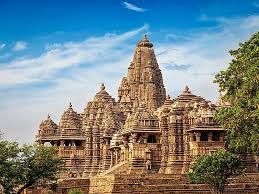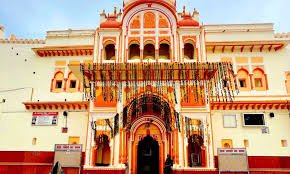
Nestled amidst the majestic Himalayas at an altitude of 3,583 meters (11,755 feet), Kedarnath Temple stands as one of the most revered shrines in Hinduism. Located in the Rudraprayag district of Uttarakhand, this ancient temple is dedicated to Lord Shiva and holds immense spiritual and historical importance. Unsurprisingly, it attracts millions of pilgrims and tourists every year, offering them blessings, solace, and a chance for spiritual rejuvenation. In this blog, we’ll explore the temple’s rich history, why it’s a preferred destination for so many, the beliefs associated with it, and its financial significance.
Historical Significance of Kedarnath Temple
The history of Kedarnath Temple is both fascinating and deeply rooted in mythology and architecture. It blends ancient legends with historical contributions, making it a place of immense interest for devotees and history enthusiasts alike.
- Mythological Origins
To begin with, the temple’s story is intricately tied to the Mahabharata, one of Hinduism’s most sacred texts. According to legend, after the Kurukshetra War, the Pandavas sought to absolve their sins of killing their relatives during the war. Subsequently, they embarked on a journey to seek Lord Shiva’s blessings. However, Shiva, unwilling to forgive them easily, disguised himself as a bull and hid in the Himalayan region. Eventually, the Pandavas discovered him, and Shiva’s hump appeared at Kedarnath, while other parts of his body manifested at nearby temples, collectively known as the Panch Kedar. - Adi Shankaracharya’s Contribution
Moving to a historical perspective, the temple is believed to have been built by the Pandavas and later revived in the 8th century CE by Adi Shankaracharya, a renowned Hindu saint and philosopher. Importantly, Shankaracharya is credited with establishing the temple as a significant pilgrimage site and promoting the ideals of Sanatan Dharma. - Architectural Marvel
Furthermore, the temple’s architecture is a testament to the ingenuity of ancient Indian craftsmen. Built in a Himalayan stone style, it features massive gray slabs that have withstood centuries of harsh weather and natural disasters. Despite being located in a region prone to avalanches and landslides, the temple has stood resilient, symbolizing the power of divine protection.
Why Do People Prefer to Visit Kedarnath Temple?
Given its spiritual aura and breathtaking natural surroundings, Kedarnath Temple is a preferred destination for pilgrims, adventurers, and nature lovers alike. Several factors contribute to its immense popularity.
- Religious Significance
Firstly, Kedarnath is revered as one of the 12 Jyotirlingas, the holiest abodes of Lord Shiva. Additionally, it is a crucial part of the Char Dham Yatra, which includes Yamunotri, Gangotri, and Badrinath. For Hindus, completing this sacred pilgrimage is considered highly auspicious. - Spiritual Connection
Moreover, the temple offers a serene environment where devotees can connect deeply with the divine. Worshiping here is believed to cleanse one’s soul and grant liberation, or Moksha. - Natural Beauty
Beyond its spiritual appeal, the temple’s location amidst the snow-capped peaks, glaciers, and lush valleys captivates visitors. The journey to Kedarnath is as much about experiencing nature’s splendor as it is about seeking blessings. - Adventure and Trekking
Equally important, the challenging 16-km trek from Gaurikund to Kedarnath is a test of physical endurance and mental strength. Completing this journey is often described as a transformative experience, leaving pilgrims with a sense of accomplishment. - Post-2013 Disaster Resilience
Lastly, the temple’s miraculous survival during the 2013 floods has only strengthened its allure. While the surrounding areas were devastated, the temple remained intact, which devotees see as a sign of Lord Shiva’s divine protection.
Beliefs and Legends Surrounding Kedarnath
Kedarnath Temple is not just a place of worship but also a repository of age-old beliefs and legends. These stories continue to inspire faith and devotion among millions of visitors.
- Moksha and Liberation
To start with, Hindus believe that a visit to Kedarnath can absolve all sins and grant salvation. In this way, the temple is seen as a gateway to freedom from the cycle of birth and death. - Shiva’s Eternal Presence
Furthermore, devotees feel an unbreakable connection with Lord Shiva in the tranquil and mystical atmosphere of Kedarnath. The temple represents Shiva’s eternal presence in nature’s elements—earth, water, air, fire, and sky. - Panch Kedar Connection
Kedarnath is the first of the five temples in the Panch Kedar circuit, representing the hump of Shiva in his bull form. The other temples—Tungnath, Rudranath, Madhyamaheshwar, and Kalpeshwar—worship different parts of Shiva’s body, making the pilgrimage a spiritually enriching journey. - Adi Shankaracharya’s Blessings
Additionally, the proximity of Adi Shankaracharya’s Samadhi near the temple adds to its sanctity. It is believed that his spiritual energy continues to bless the temple and its visitors.
Financial Significance of Kedarnath Temple
Apart from its spiritual importance, Kedarnath Temple also plays a significant role in the region’s economy and financial ecosystem.
- Pilgrimage Tourism
Firstly, the temple is a major driver of pilgrimage tourism, with millions of devotees visiting annually. This influx boosts local businesses, including hotels, restaurants, and transport services, contributing significantly to Uttarakhand’s economy. - Temple Revenue
Additionally, the temple generates substantial revenue through donations, offerings, and rituals performed by devotees. This income is managed by the Uttarakhand Char Dham Devasthanam Board, ensuring transparency and proper utilization of funds. - Post-2013 Reconstruction Investments
Following the devastating floods in 2013, significant investments were made to rebuild and restore infrastructure around the temple. Improved facilities have made the pilgrimage more accessible, leading to increased footfall and revenue. - Employment Opportunities
Lastly, the temple indirectly supports thousands of livelihoods, including priests, porters, local guides, and hospitality staff, further emphasizing its economic importance.
Post-2013 Floods: A Testament to Resilience
The 2013 floods were one of the most catastrophic natural disasters in Indian history, causing widespread devastation in Kedarnath and surrounding areas. Despite this, the temple survived with minimal damage, a fact that devotees consider miraculous. This event further solidified the temple’s status as a symbol of divine protection.
Since then, extensive reconstruction efforts have transformed the region. Modern facilities such as paved roads, helicopter services, and improved shelters have made the pilgrimage safer and more accessible.
Conclusion
In conclusion, Kedarnath Temple is far more than just a pilgrimage site. It is a sacred space where spirituality, history, and natural beauty converge. Whether it is the legends of the Pandavas, the architectural marvel of the temple, or its miraculous survival during the 2013 floods, Kedarnath continues to inspire awe and devotion.
For devotees seeking salvation, adventurers looking for a challenge, or travelers yearning for serenity, Kedarnath offers an unparalleled experience. It stands as a testament to the enduring power of faith and the timeless beauty of the Himalayas. Truly, a visit to Kedarnath is not just a journey but a transformative experience that lingers in the heart and soul.
Om Namah Shivaya!





